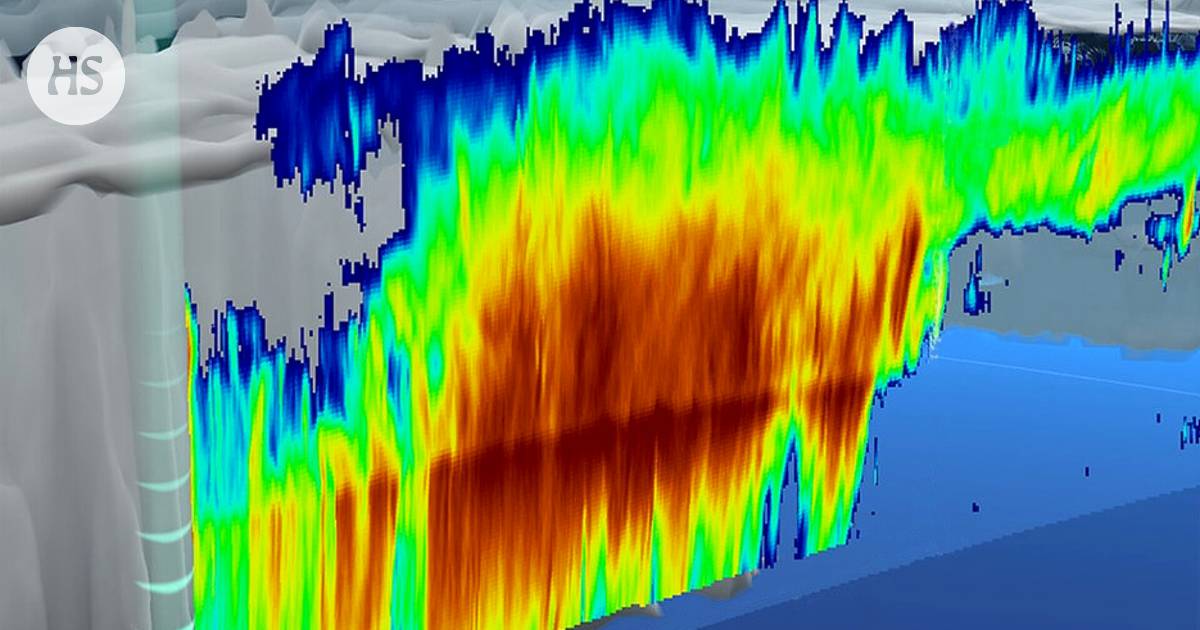The European weather satellite Earthcare also helps to understand the important role of clouds in climate change
The summary is made by artificial intelligence and checked by a human.
The Earthcare satellite photographed a cross-section of a storm cloud from space for the first time.
The satellite’s Doppler radar reveals the densities of the amount of ice, snow and rain in the cloud.
The radar improves weather forecasts, for example regarding rain, also in Finland.
In addition, the satellite helps to understand the effect of clouds on the climate.
A storm cloud the cross-section has been photographed from space for the first time. The image was taken by a new weather satellite Earthcare.
On June 13, Earthcare filmed a cross section of a storm cloud as an experiment. The cloud was east of Japan at the time.
The test image was released by two space agencies, Europe’s Esa and Japan’s Jaxa. Finns also have a role in the history and development of this satellite.
Earthcaren doppler reveals the densities of ice, snow, and rain in a storm cloud.
Radar can be used to calculate the speed at which different forms of water fall to the ground, usually as water.
Earthcare was launched into Earth orbit in May. With the help of satellites, meteorologists will soon have a better understanding of how clouds affect the climate.
in Finland Patria’s space unit has participated in the development of the satellite. Now the company’s name is Beyond Gravity.
The scientific equipment of the satellite has been designed by researchers from the Institute of Meteorology and the University of Helsinki, professor Dmitri Moisseevin under management, says the research professor Jarkko Koskinen.
Koskinen is the general manager of the Geospatial Information Center of the Land Surveying Institute, which monitored the launch of the satellite in May in California.
He has been participating in Earthcare since 2008. That’s when the European Space Agency ESA signed an agreement to manufacture the satellite.
Now that the satellite has taken the first test images, Koskinen is smiling.
“The importance of Earthcare is also notable for Finland. We gain more understanding of how clouds are formed and more data on the forms of rain. The measurement of the amount of precipitation is getting more accurate.”
Finland too the weather forecasts will surely improve before long.
“The European Center for Medium-Range Weather Forecasts, ECMWF, will soon incorporate Earthcare’s observations into its weather models. Finland uses models to forecast its own weather,” says Koskinen.
The satellite, which cost about 850 million euros, improves weather forecasts because it “sees” more.
Up until now, data on clouds has been collected using ground-based weather stations and airplanes. So no higher, from Earth’s orbit.
“For the first time, we can predict the falling speeds of ice crystals, raindrops and snowflakes all over the globe, not just in the vicinity of radar stations,” says Dr. Robin Hogan. He is a researcher at ECMWF.
“The radar’s echo provides accurate rainfall velocities with the help of doppler shift, with an accuracy of about a meter per second,” Hogan describes BBC News.
The cross-section shows that the large particles are in the center of the cloud.
Icy crystals, such as hailstones and snowflakes, either hang high or fall down more slowly.
In the atmosphere there is a clear boundary at an altitude of about five kilometers, where ice and snow melt and form water droplets. They fall to Earth as rain, of course.
The density of the particles, the size of the distribution and the movement of the particles clarify the understanding of how the cloud is formed.
At the same time, researchers are refining their knowledge of the role of clouds on the entire Earth, which is warming and is affected by clouds.
Matalla moving clouds are known to cool the planet. They reflect sunlight directly back into space. It cools the earth.
At high altitude, clouds can trap the Sun’s energy. It warms the earth.
Earthcare tries to clarify where the balance of these opposing forces lies.
It is precisely the differences in clouds that are one of the uncertain factors in the models that climate scientists have run on computers.
The models try to predict how the climate will react when the amount of greenhouse gases increases.
“Earthcare has three other devices. They will soon be launched one by one,” says Hogan to BBC News.
He says that he has been preparing Earthcare for a long time, longer than Suomen Koskinen, already more than 20 years.
